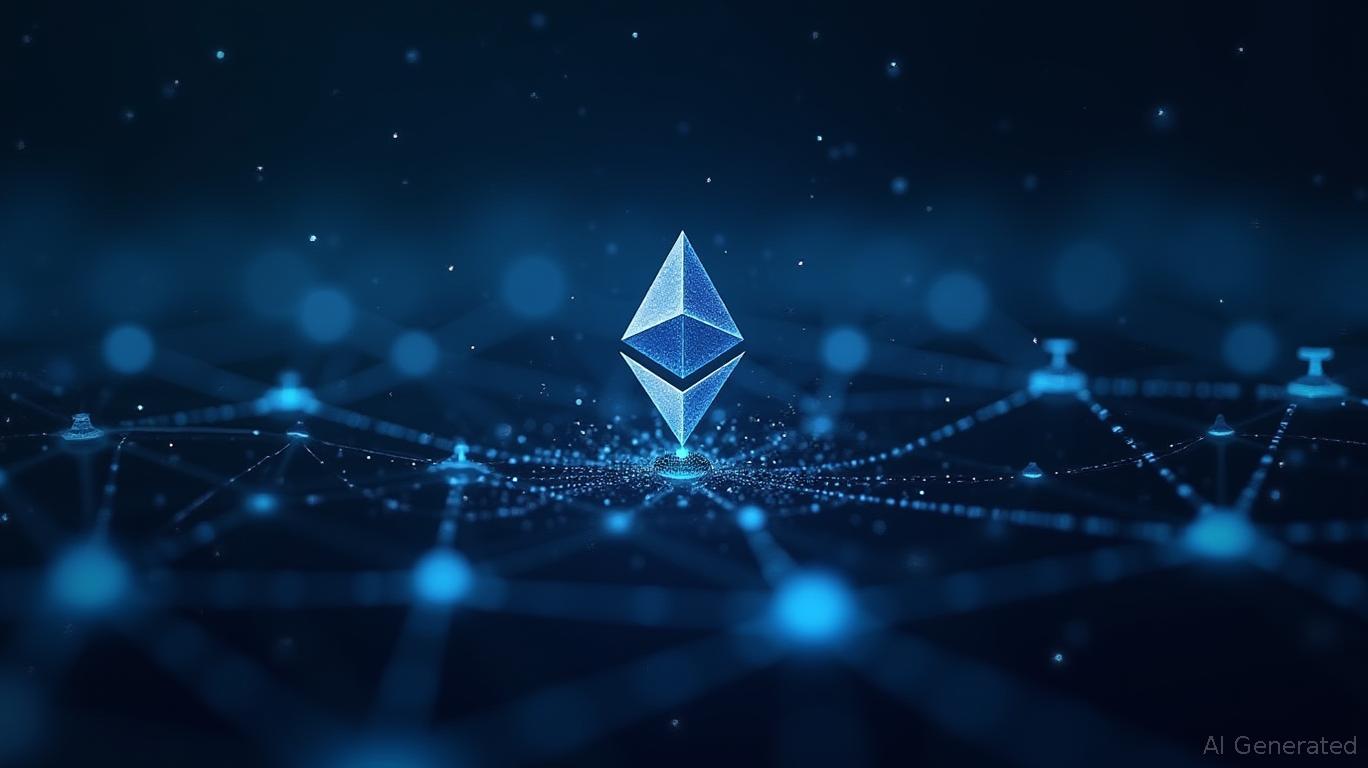Ethereum's Scalability Revolution: Why DeFi Adoption is Exploding and Why Investors Should Pay Attention
The Ethereum blockchain, the backbone of decentralized finance (DeFi), has undergone a seismic transformation over the past two years. From its energy-intensive proof-of-work (PoW) model to the efficiency of proof-of-stake (PoS), and the implementation of EIP-1559—a fee mechanism designed to stabilize transaction costs—Ethereum has positioned itself as the infrastructure of choice for mainstream DeFi adoption. This article explores how these upgrades are reshaping the ecosystem, supported by hard data on Total Value Locked (TVL), and why investors should take note.

The Scalability Crisis: Before the Upgrades
Prior to 2021, Ethereum's reliance on PoW and first-generation fee structures created two major bottlenecks: high gas fees and network congestion. During the 2021 DeFi
, average transaction fees spiked to over $22, deterring small users and stifling ecosystem growth. Meanwhile, TVL hit a record $178 billion in April /2022 but began a sharp decline as macroeconomic headwinds and competition from rival blockchains emerged.The problem? Ethereum's inability to scale efficiently under PoW.
The Game-Changing Upgrades: EIP-1559 and PoS
EIP-1559 (August 2021):
This upgrade introduced a dynamic fee mechanism that burns a portion of transaction fees, reducing volatility and aligning network economics with user needs. The result?
Data shows gas fees fell by 60% post-EIP-1559, stabilizing around $3–$7 per transaction.
The Merge (September 2022):
Transitioning Ethereum to PoS eliminated energy-intensive mining, slashing energy use by 99.9%. More critically, it enabled future upgrades like Layer-2 scaling (e.g., Optimism, Arbitrum), which now process 40% of Ethereum's transactions at 1/10th the cost.
TVL Growth: A Clear Indicator of Ecosystem Health
Post-upgrades, DeFi TVL rebounded dramatically. By late 2023, Ethereum's DeFi TVL surged to $80 billion, up from a post-Merge low of $42 billion. Key protocols like Lido (TVL: $32.87 billion) and Aave ($26.7 billion) led this recovery, leveraging staking and liquidity solutions that thrive on Ethereum's stability.
Ethereum's TVL grew 114% since early 2023, outperforming competitors amid institutional interest.
Why This Matters for Mainstream Adoption
- Lower Barriers to Entry: Reduced fees and faster transactions (Layer-2 networks now handle 10,000+ tx/s vs. Ethereum's 30 tx/s baseline) make DeFi accessible to everyday users.
- Institutional Trust: JPMorgan's first cross-border DeFi transaction in 2022 and MetaMask Institutional's 17,000+ protocol access points signal legitimacy for large-scale adoption.
- Economic Resilience: Ethereum's deflationary post-Merge supply (issuance dropped to 0.1% annually) aligns with long-term value retention, a critical factor for institutional investors.
Expert Take: Ethereum's “Moat” is Growing
“Ethereum's upgrades aren't just technical fixes—they're a strategic play to lock in dominance,” says Hasu, a leading DeFi analyst. “Layer-2s and liquid staking (e.g., Lido) create a flywheel effect: more users → lower costs → more users.”
Investment Thesis: Long-Term Ethereum (ETH) and DeFi Protocols
1. Ethereum (ETH):
- Core Asset: As the native token, ETH is the fuel for DeFi transactions and staking. Its supply deflation and network effects make it a store of value.
- Data Edge: ETH price correlates +0.8 with DeFi TVL growth (post-Merge).
2. DeFi Protocols on Ethereum:
- Lido (LDO): Captures 30% of ETH staking rewards via its stETH token. TVL grew 100% in 2023.
- Aave (AAVE): Leading lending protocol with $26.7 billion TVL, benefiting from stable interest rates.
- Layer-2 Tokens (OP, ARB): Optimism and Arbitrum's tokens appreciate as their networks handle more volume.
Risks and Caution
- Regulatory Uncertainty: SEC scrutiny of tokens and protocols could slow adoption.
- Bear Market Volatility: ETH's price remains tied to crypto cycles, with 2022's $1,000 lows still fresh in memory.
Final Analysis: The Future is Ethereum-Led
Ethereum's scalability upgrades have turned it into a highway for DeFi, not just a congested side street. With TVL rebounding, institutional confidence rising, and Layer-2 solutions unlocking new use cases (e.g., derivatives, gaming), Ethereum's ecosystem is primed for exponential growth.
For investors: Think long-term. Allocate 5–10% of a crypto portfolio to ETH and top DeFi protocols. The next five years could mirror Ethereum's post-2015 rise—when it went from a niche project to the $1 trillion+ backbone of blockchain finance.
The race to mainstream DeFi is on—and Ethereum is leading.
Roaring Kitty's Final Verdict:
> "Ethereum's upgrades aren't just about speed—they're about trust. With institutional money flowing in and TVL climbing, ETH is the ultimate 'buy and hold' asset for the next decade."

Comments
No comments yet